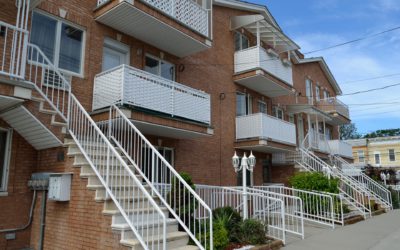In the labyrinthine world of real estate, where contracts are woven with legal intricacies, one often encounters a practice that straddles the thin line between convenience and peril – sublease apartments.
Its allure is undeniable, offering the promise of an extra income stream or a respite from the relentless grip of escalating rents.
In a perfect situation, renters would always keep you in the loop about their intentions to sublet. Yet, sometimes you might be taken aback to find an unexpected tenant in your property due to an unauthorized sublease.
Advantages of Sublease Apartment Arrangements
Financial Advantages for Original Tenants
In the realm of urban dwelling, the opportunity to sublease an apartment is akin to unearthing hidden treasure. Original tenants, burdened by the rigors of rent, can alleviate their financial distress by sharing their abode. This act metamorphoses an idle asset into a lucrative income stream, akin to an astute investor monetizing a dormant resource.
Moreover, the original tenant retains control, maintaining occupancy rights while deriving financial benefits. This synergy between sublessee and lessee exemplifies the pragmatic utility of legal subletting, manifesting in tangible financial advantages that underscore its viability in the contemporary urban landscape.
Opportunities for Short-Term Renters
Legal subletting can present a wealth of opportunities for short-term renters. In essence, subletting entails the act of a tenant leasing their apartment to another party for a predetermined period, often shorter than the primary lease. This arrangement, though not without its complexities, brings forth several advantages for those seeking short-term lodging.
Legal subletting circumvents the conventional challenges associated with securing short-term housing in competitive urban landscapes. It grants prospective renters access to a broader array of housing options, including furnished units and prime locations, which may otherwise remain elusive. Furthermore, the cost-efficiency of subletting often proves alluring, as short-term occupants can tap into the residual leaseholder’s pre-existing rental terms, potentially availing of discounted rates.
Filling Vacancies and Preventing Property Abandonment
Landlords often grapple with the challenge of filling vacancies. Enter sublease apartments, a concept that can serve as a strategic lifeline in these circumstances. The answer lies in its potential to simultaneously mitigate vacancy issues and deter abandonment.
Long-term vacancies can inflict financial strain on property owners, leading to a cascade of issues such as neglected maintenance and decreased property value. Legal subletting injects fresh occupancy into the space, minimizing these undesirable consequences.
Furthermore, sublease agreements often entail stringent terms, thus deterring tenants from abandoning their obligations.
Potential Risks and Consequences of Sublease Apartment Illegality
Legal Actions and Financial Penalties
The original tenant, subleasing apartment without authorization, exposes themselves to multifarious risks. In contravention of the lease terms, this subterfuge not only breaches trust but also contravenes property rights. Landlords are endowed with the prerogative to select tenants based on specific criteria, and subletting without their knowledge disrupts this equilibrium.
When the unauthorized subletting comes to light, it can set in motion a series of punitive measures. Landlords, justifiably aggrieved, can initiate eviction proceedings against the original tenant for breach of lease. This legal recourse can result in the tenant’s removal, tarnishing their rental history and making future housing prospects daunting.
In addition to eviction, the original tenant may face a cascade of financial penalties, including hefty fines and legal fees incurred during the eviction process. Furthermore, any damages or losses incurred by the landlord due to the sublease arrangement can be sought in a civil lawsuit, escalating the financial jeopardy.
Eviction Risks for the Original Tenant
One perilous facet of illegal subletting lies in the tenant’s culpability for the subtenant’s actions. In the event of lease violations, property damage, or even criminal activities perpetrated by the subtenant, the original tenant remains vicariously liable, their legal standing jeopardized.
Moreover, the subtenant’s inability to meet financial obligations may lead to arrearages in rent payments. These arrears, if left unaddressed, can culminate in the issuance of eviction notices to the original tenant.
Damage to Credit and Rental History
Illegal subletting of a sublease apartment can wreak havoc on the credit and rental history of the original tenant.
First, unauthorized subletting often contravenes the lease agreement, causing the original tenant to be in breach of contract. Consequently, this breach can be reported to credit bureaus, tarnishing the tenant’s credit score. The repercussions of a damaged credit score extend beyond the realm of housing, affecting one’s ability to secure loans, credit cards, or future rentals.
Furthermore, unvetted subtenants may neglect their financial obligations, such as rent or utilities, placing the onus back on the original tenant. This financial burden, coupled with potential legal expenses, compounds the predicament. Long-drawn legal battles can exacerbate the tenant’s credit woes.
Immediate Actions to Take When Uncovering Sublease Apartment Issues
Review the Lease Agreement
The lease agreement, a legally binding document, is crafted with meticulous attention to detail, ensuring that both parties’ rights and responsibilities are clearly delineated.
Before taking any action, the landlord should review the original lease agreement to confirm that subleasing is indeed prohibited or requires the landlord’s permission.
When tenants sublease without permission, they not only breach this contract but also potentially jeopardize the property’s integrity and the landlord’s legal standing.
Verify if Tenants are Unlawfully Subleasing the Rental Property
Before taking action for a lease breach, it’s essential to secure written evidence that a tenant might be subletting the property without your approval. To gather this information, consider reaching out to your tenants directly. Ask them candidly if they’re subletting and explain your reasons for suspecting such activity.
Even if they haven’t admitted to it yet, it’s a good idea to highlight the sublease provision in the lease. This will remind them of the proper procedures to follow and the potential consequences of unauthorized subletting.
If your lease doesn’t specifically address subletting, it’s still crucial to emphasize to the tenants the importance of keeping you in the loop. This is not just a matter of trust but can also relate to insurance implications and local occupancy regulations.
Inform the Tenant About the Upcoming Procedures
If it’s evident that tenants are subleasing their space without prior consent, you have the right to inform them about the subsequent actions in line with local rental regulations. If you’re not inclined to permit the sublease and local laws back your stance, you’ll need to decide if the new tenant can remain or if they must vacate within a specified period.
On the other hand, if you’re open to the idea, it’s essential to communicate with both the original tenant and the subtenant about the necessary steps to formalize the arrangement. This might include a face-to-face or virtual meeting with the new tenant, a thorough check of their past rental behaviors, or drafting a sublease contract that clearly outlines the responsibilities concerning rent and any damages to the property.






0 Comments